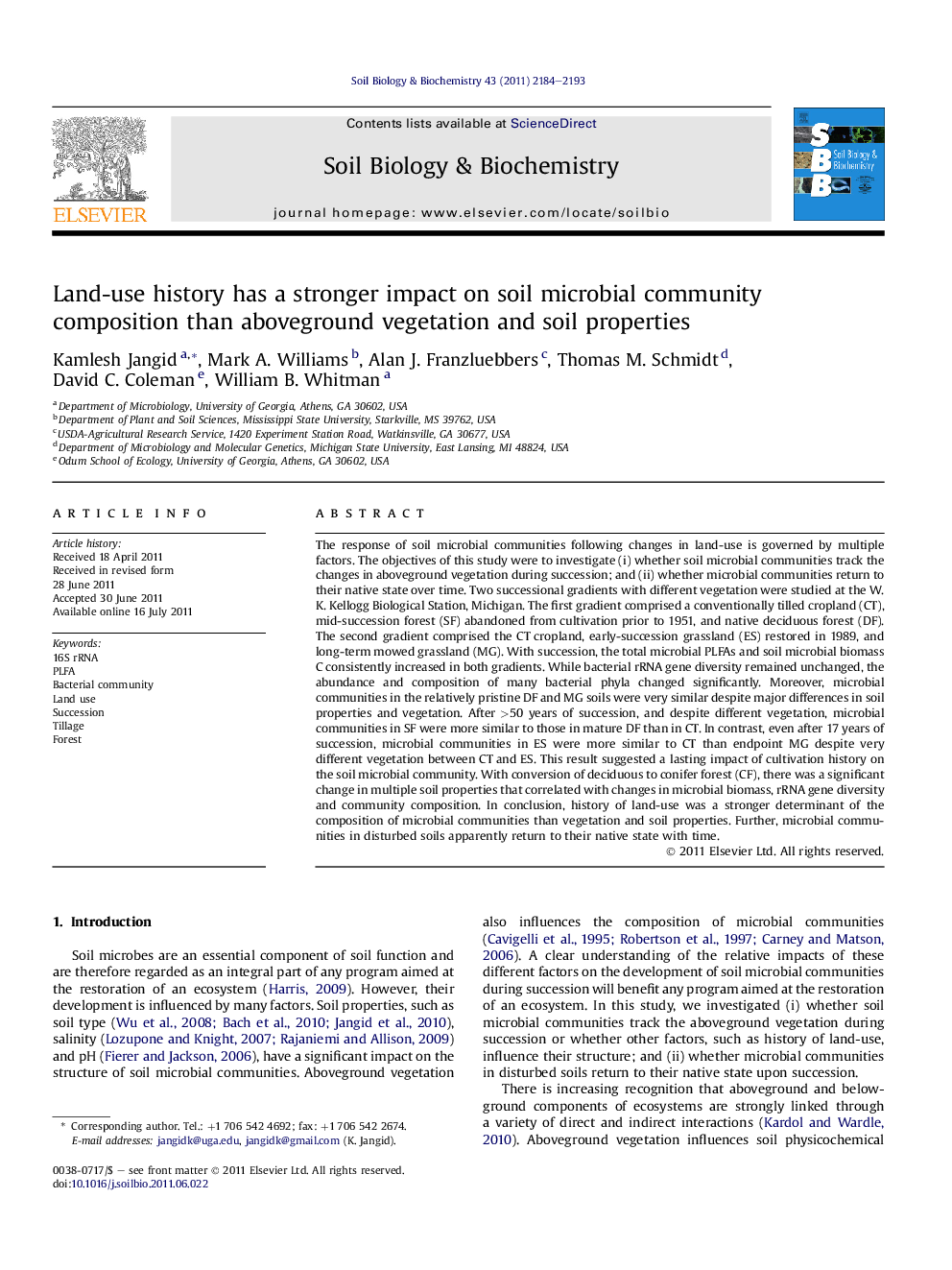| Article ID | Journal | Published Year | Pages | File Type |
|---|---|---|---|---|
| 2025092 | Soil Biology and Biochemistry | 2011 | 10 Pages |
The response of soil microbial communities following changes in land-use is governed by multiple factors. The objectives of this study were to investigate (i) whether soil microbial communities track the changes in aboveground vegetation during succession; and (ii) whether microbial communities return to their native state over time. Two successional gradients with different vegetation were studied at the W. K. Kellogg Biological Station, Michigan. The first gradient comprised a conventionally tilled cropland (CT), mid-succession forest (SF) abandoned from cultivation prior to 1951, and native deciduous forest (DF). The second gradient comprised the CT cropland, early-succession grassland (ES) restored in 1989, and long-term mowed grassland (MG). With succession, the total microbial PLFAs and soil microbial biomass C consistently increased in both gradients. While bacterial rRNA gene diversity remained unchanged, the abundance and composition of many bacterial phyla changed significantly. Moreover, microbial communities in the relatively pristine DF and MG soils were very similar despite major differences in soil properties and vegetation. After >50 years of succession, and despite different vegetation, microbial communities in SF were more similar to those in mature DF than in CT. In contrast, even after 17 years of succession, microbial communities in ES were more similar to CT than endpoint MG despite very different vegetation between CT and ES. This result suggested a lasting impact of cultivation history on the soil microbial community. With conversion of deciduous to conifer forest (CF), there was a significant change in multiple soil properties that correlated with changes in microbial biomass, rRNA gene diversity and community composition. In conclusion, history of land-use was a stronger determinant of the composition of microbial communities than vegetation and soil properties. Further, microbial communities in disturbed soils apparently return to their native state with time.
► We study microbial communities of cultivated soils developing into grassland and forest. ► After >50 years of succession, communities were more similar to native forest. ► Even after 17-years grassland establishment, communities were more similar to cropland. ► Mostly, soil microbial communities did not follow changes in aboveground vegetation. ► Effect of land-use history is strong, but with time microbial communities return to native state.
